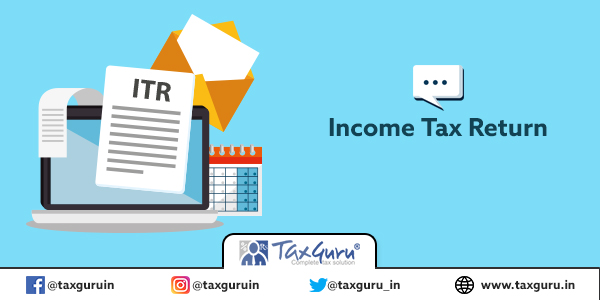An ETF is a security that tracks an index, a commodity or a basket of assets like an index fund, but trades like a stock on the stock exchange. So what exactly are ETFs? ETFs are somewhat like a Cadbury’s Celebration pack which contains a variety of Cadbury chocolates. Imagine a dairy milk chocolate, just like companies come in different sizes and prices, a dairy milk is available in all kinds of tastes, sizes and prices. When you buy a celebration pack according to your specific requirement, you buy yourself an ETF. The price of an ETF depends on the price of the individual stock. So when the price of the stocks goes up, so does the price of the ETF and vice versa. So ETF is essentially an index fund that is listed and traded on a stock exchange like a stock. It is like a basket of stock that replicates the composition of Index like CNX Nifty or BSE Sensex.
The first ETF in India, Nifty BeEs (Nifty Benchmark Exchange Traded Scheme) based on S&P CNX Nifty was launched in January 2002. Its symbol is “NIFTYBEES”.
So now the question arises why one should invest in ETF? ETF provides the investors with the following benefits:
- An ETF can be bought and sold as easily as a stock.
- An ETF provides the investor with the benefit of diversification since the amount is indirectly invested to assets which belong to different sectors.
- These are low cost.
- Since ETFs are listed, it becomes easy to track them.
- An investor need not track the individual stock
- A little less risky than buying an individual stock.
- Investing in an ETF does not require much preliminary exercises to be done, say an investor need not study the fundamentals of the individual stock in the Index.
ETFs is a special kind of a mutual fund in a way that ETFs are bought and sold in units which is listed on a stock exchange and can be traded the entire day. However ETFs are different from mutual funds in many aspects. You can buy/sell an ETF at NAV in real-time during the entire trading day, whereas you can buy a mutual fund only at the fund’s NAV published at the end of each trading day. ETFs are cheaper than mutual funds or you can say ETF have lower expense ratio than mutual funds.
So what does ETFs exactly do?
Considering the rate cut RBI made a few weeks back and expecting another 25bps rate after the budget, you decide to buy all the banking sector stocks in S&P BSE BANKEX index. There are 12 banks which are there in the index. Each banking stock has weights according to their market value. HDFC bank has the maximum weight viz 25.05%, followed by SBI 13.02%, ICICI bank 15.72% and Axis Bank 12.44% among the top four. Now suppose you have Rs.100000 to invest in the banking & financial sector stocks. What you do is, you do your homework and try to invest in these stocks according to their weights like you invest Rs.15720 (100000*15.72%) in ICICI, Rs.25050 (100000*25.05%) in HDFC etc. So what you end up doing is a cumbersome and some hefty task. You will now have to track each and every stock each day. Not something everyone would like or be interested in doing.
The other option is you buy the index itself known as the Goldman Sachs Banking Index Exchange Traded Scheme popularly called as BANKBEES. You buy BANKBEES units worth Rs.100000 and in turn what ETF does is your Rs100000 is invested in bank stocks in the same proportion as their weights. All the exercises you did as an investor is avoided just by buying BANKBEES. Also you need not track individual stocks; you just have to keep up with the performance of your ETF (visit www.nseindia.com , www.bseindia.com , www.moneycontrol.com , www.economictimes.indiatimes.com ). ETFs like BANKBEES replicate their underlying indices. They don’t try to beat the market; they try to be the market.
The table given below shows the performance of some of the ETFs in past years:
| SCHEME | SYMBOL | NAV
(Rs/Unit) |
Returns in %
As on July 24, 2015 |
|||
| 6 month | 1 year | 2 year | 3 year | |||
| Goldman Sachs Infrastructure
Exchange Traded Scheme |
INFRABEES | 339.35 | 0.2 | 3.1 | 22.7 | 13.5 |
| Goldman Sachs Banking Index
Exchange Traded Scheme |
BANKBEES | 1874 | -9.2 | 21.4 | 32.2 | 21.6 |
| Goldman Sachs Nifty junior
Exchange Traded Scheme |
JUNIORBEES | 207.20 | 5.5 | 27.2 | 32.6 | 27.2 |
| Goldman Sachs Nifty
Exchange Traded Scheme |
NIFTYBEES | 863 | -4.5 | 9.5 | 20.1 | 18.5 |
Source: moneycontrol.com
THE FINAL WORD
We are in that phase of economy and the Bull Run, I expect Infra sector to have a boom for about 1 to 2 years because in this phase the government focuses the most on improving the infrastructure of the economy which in turn helps capital goods industry to grow. Considering this, I would suggest (do your analysis too) the readers to invest in Nifty BEES and Nifty JUNIORBEES. It is also clear from the above table how much returns these ETFs have provided in last 1 to 3 years.
TIP: “Be fearful when others are greedy and greedy when others are fearful” – Warren Buffett
Happy Investing!
(Author can be reached at Email id: jayantmakkar1692@gmail.com ,Ph. No. 9654809956)
Click here to Read Other Article from Jayant Makkar



























Yes. Long term capital gains from investment in stock market will tax tax free
Sir what about the Tax factor? Is it ONE YEAR HOLDING WILL BE TREATED AS L O N G T E R M CAPITAL GAIN Which is TOTALLY TAX FREE?